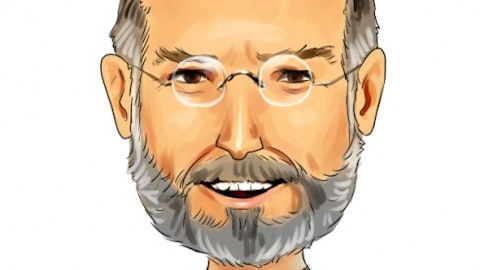
Device penetration in the U.S. is rising
The number of Internet-connected devices per U.S. Internet household has increased to 5.7 in 1Q 2013, up from 5.3 from three months ago, according to the NPD Group. And the number of tablets in use increased by 18 million and the number of smartphone users increased by 9 million as well.
Tablets like Amazon.com, Inc. (NASDAQ:AMZN)‘s Kindle Fire and Google Inc (NASDAQ:GOOG)’s Nexus line are expected to gain more market share. However, the iPad is the runaway leader but Apple’s market share in the tablet space is expected to trickle down to 46% in 2013, from 51% in 2012, according to IDC.
According to Localytics, Kindle Fire is the most widely used Android powered tablet, and the number of Kindle Fire devices in the U.S. represents 33% of Android tablets worldwide. And the U.S. is by far the largest tablet market in the world with ~59% market share.
And going forward, smartphone and tablet penetrations are expected to rise. In Q1 CY2013, smartphone penetration rose to 57%of cellphone users, and tablet penetration increased to 53% of internet households in the U.S., according to the NPD Group.
Content storage enhances the moat
Content consumption by the user in leading cloud-based ecosystems including the App Store, Amazon’s platform as well as on Google Play makes the consumer very sticky. Storing a user’s music, movies, books and numerous other content in a platform’s ecosystem makes it that much harder for the user to switch from the platform. The digital content stored in the ecosystem substantially increases the switching costs for a user to change the service.
iTunes dominates; Music downloads are robust
With more than half a billion users on iTunes, Apple Inc. (NASDAQ:AAPL)’s content ecosystem is crucial for its long-term success. iTunes has evolved into a key revenue source for the recorded music industry, ever since it launched digital music downloads. And going forward, iTunes will continue to be a dominant retailer, as eight out of ten digital music buyers used the iTunes store for their downloading needs.
Apple Inc. (NASDAQ:AAPL) has effectively taken away the distribution of the music industry through its iTunes service. The market share of Apple’s iTunes now stands at 63% of paid music downloads, and Amazon now accounts for a respectable 22% at the end of 2012, according to The NPD Group. In 2012, 44 million users in the U.S. bought/downloaded at least one track or album and the average spending on music downloads increased 6% year-over-year.
With such a strong position, Apple Inc. (NASDAQ:AAPL) has tremendous bargaining leverage when it comes to contracting with third parties for acquiring digital content on its ecosystem. In 1Q FY2013, Apple Inc. (NASDAQ:AAPL)’s net sales from iTunes alone stood at $2.1 billion, which goes to show the impact of having a huge installed base of iOS devices in the market. And iTunes continues to expand its offerings of digital content, apps which lead to higher sales on the App Store.
Amazon’s e-Commerce and Digital Media Ecosystem is rapidly expanding
Amazon.com, Inc. (NASDAQ:AMZN) has been adding a lot of digital media content to its vast ecosystem to harness the sales of its Kindle line of devices, and to sell more subscriptions of its Prime shipping service. Numerous regular consumers have adopted Amazon’s Prime service, as a result, Amazon’s net shipping costs as a % of revenue has spiraled downwards.
In Q4 2012, Amazon.com, Inc. (NASDAQ:AMZN) reported that eBooks was a multi-billion dollar category for the company, and grew at stunning pace of 70% on a year-over-year basis. In addition, Amazon has upped its share in music downloads from only 7% in 2008 to a healthy 22% at year-end 2012, according to NPD Group.
Amazon has been rapidly adding substantial amounts of content in its ecosystem and now has more than 23 million movies, TV Shows, books, apps and games etc. Amazon.com, Inc. (NASDAQ:AMZN)’s customer accounts of more than 200 million is aiding the company to gain more momentum for video subscription services, while selling substantial amounts of eBooks, Audio Books and cross selling other products and services in Amazon.com, Inc. (NASDAQ:AMZN)’s vast Platform.
The company’s publicized strategy of selling devices at roughly break-even and to make money when consumers use to buy digital content should lead to more content additions to the platform and grow sales as well.
Android’s Success Has Aided Substantially
Android is very dominant in the mobile OS space with more than 750 million mobile devices using the operating system. Largely fueled by the wild success of Android across the globe, Google Inc (NASDAQ:GOOG)‘s Play store has been gaining tremendous momentum in getting more users, downloads and most importantly, revenues.
According to App Annie, in Q1 CY2013, Google Inc (NASDAQ:GOOG) Play has achieved higher growth rates than the iOS App Store for both downloads and revenues. While Google Play reached close to 90% of the iOS App Store downloads in the past quarter, the iOS App Store maintained its strong lead in monetization, earning about 2.6x the app revenue of Google Play, which was 4.0x in Q4 CY2012. The U.S. and China were major contributors for Apple’s App store, whereas, Japan, Russa and South Korea played an integral part in Google Play’s download and revenue numbers.
Google Play has a large and wide assortment of free and cheap games, which make up a large portion of total downloads. However, Google monetizes a lot of apps by placing ads on them, and makes a large number of these apps free. And often times, the same apps on iOS are paid apps.
Google Inc (NASDAQ:GOOG) Play’s content catalog should see a sizable increase down road as it partners with more movie studios, music companies, publishers to add more content. Going forward, Google Play should see more incremental downloads as more and more Android-based phones enter the market from various manufacturers (OEMs).
Eric Schmidt of Google recently stated that Android-based phones should cross the billion dollar mark soon, because companies can freely tinker and customize Android. The number of Android activations hit a staggering 1.5 million per day. In addition to substantial content and advertising revenue driven by Android adoption, Google monetizes increased search volumes on mobile as well.
Strong ecosystem is crucial for long-term success
Firms that offer a great holistic ecosystem with their hardware offerings will grab market share from competitors. Apple Inc. (NASDAQ:AAPL)’s offering can be categorized as more high-end, compared to Google Inc (NASDAQ:GOOG)’s Nexus 7 and Amazon’s Kindle Fire line. However, all three can gain more market share in the tablet space as consumers adopt more mobile devices.
More connected devices will lead to consumers spending more time online browsing and buying content from the respective platforms. As a result, a strong ecosystem will contribute to enhancing the moat of these tech giants, even in the face of intensifying competition.
The article Ecosystems Are Widening Moats originally appeared on Fool.com and is written by Ishfaque Faruk.
Copyright © 1995 – 2013 The Motley Fool, LLC. All rights reserved. The Motley Fool has a disclosure policy.


